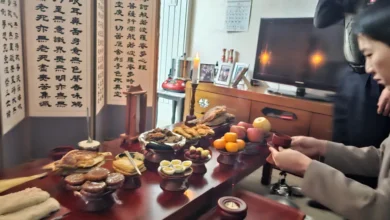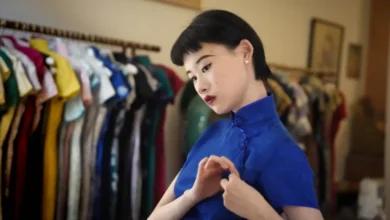The kimono, a traditional Japanese garment, is more than just clothing; it’s a cultural icon steeped in history and symbolism. Its presence is particularly notable in two vital aspects of Japanese culture: tea ceremonies and festivals.
Understanding the role of the kimono in these events offers a glimpse into the rich tapestry of Japanese tradition. This article will explore the different types of kimonos worn in these settings, their significance, and the etiquette associated with them.
The Kimono: An Introduction
The word “kimono” literally translates to “thing to wear.” This seemingly simple definition belies the complexity of this garment. Traditionally, a kimono is a T-shaped, straight-lined robe that falls to the ankles, with long, wide sleeves.
It’s secured with a sash called an obi, and its fabric, design, and color often convey information about the wearer’s age, marital status, and the occasion for which it is worn. The kimono is a testament to Japanese artistry, with each detail carefully considered.
See also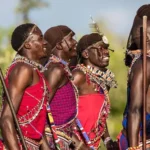 The Maasai Shúkà: A Key Element in Rites of Passage Ceremonies
The Maasai Shúkà: A Key Element in Rites of Passage CeremoniesThe Evolution of the Kimono
The kimono has a long history, evolving over centuries. Initially, it was influenced by Chinese clothing during the Nara period (710-794). Over time, it developed unique features and styles specific to Japan. The Heian period (794-1185) saw the emergence of more elaborate designs and multiple layered kimonos, reflecting the opulent court life.
As Japan moved through various historical periods, the kimono continued to adapt, reflecting societal changes and artistic trends. Today, while still a powerful symbol of tradition, kimonos are also being reinterpreted and incorporated into contemporary fashion.
Kimonos in Japanese Tea Ceremonies
The Japanese tea ceremony, or chanoyu, is a ritualistic practice that emphasizes harmony, respect, purity, and tranquility. The kimono worn during a tea ceremony isn’t merely an attire; it’s an integral part of the ceremony itself. The clothing of the host and guests contributes to the overall atmosphere of the event.
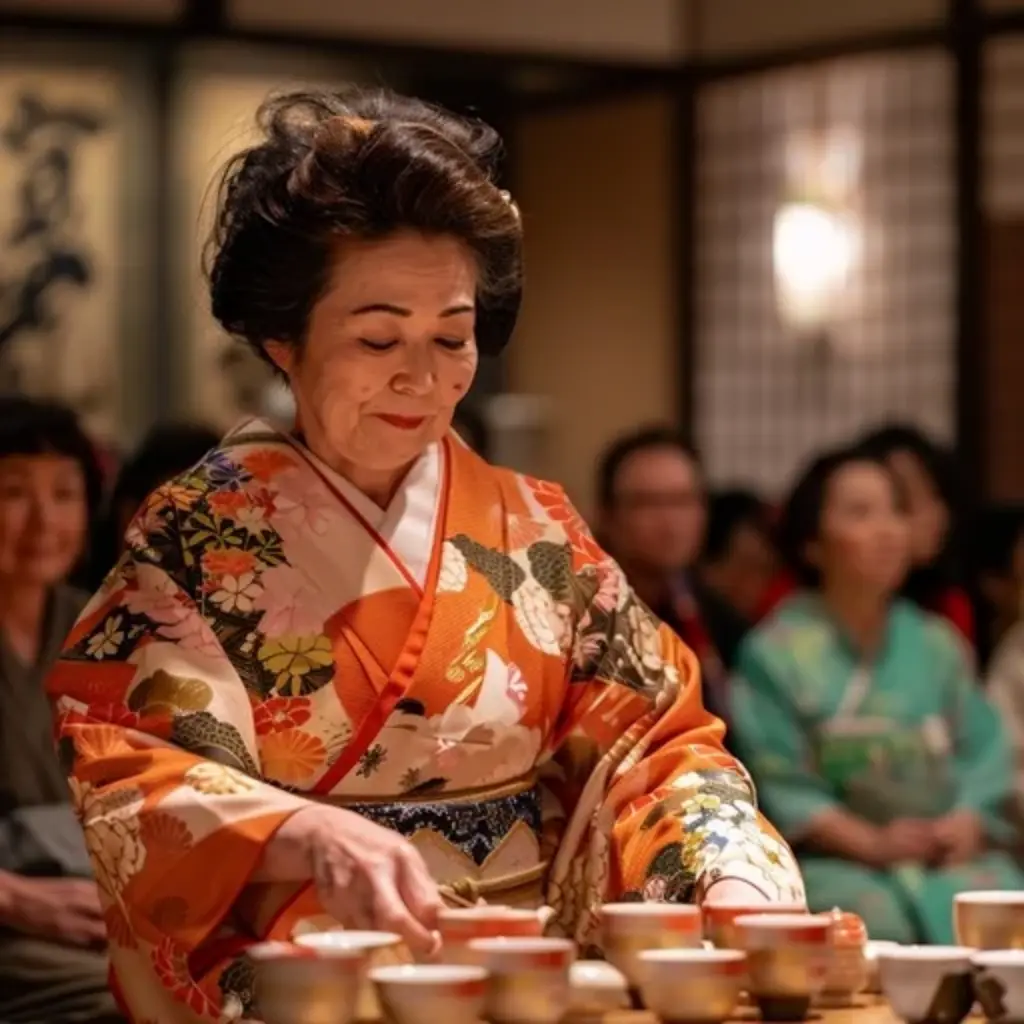
Host’s Kimono
The host’s kimono for a tea ceremony is typically more subdued than those worn at festivals. The aim is not to draw attention to oneself, but rather to create a peaceful and harmonious environment. Here’s what to consider:
See also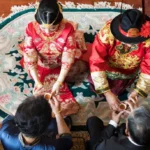 The Qipao’s Role in Chinese Wedding and Tea Ceremonies
The Qipao’s Role in Chinese Wedding and Tea Ceremonies- Color and Pattern: The host will often choose a kimono in muted colors, such as greys, browns, blues, or greens, with subtle patterns like small geometric shapes or traditional floral designs. Loud or overly bright colors are avoided.
- Type of Kimono: Often, the host will wear a tsukesage or a houmongi kimono. These are semi-formal kimonos suitable for a respectful occasion. The tsukesage has less patterning and often has the design going upward, whereas the houmongi has more elaborate patterns.
- Obi: The host’s obi is usually a formal or semi-formal fukuro obi or nagoya obi made of elegant silk, often in a complementary but similarly restrained color palette.
Guest’s Kimono
Guests attending a tea ceremony should also dress respectfully. Their choice of kimono should reflect the formality of the occasion, without overshadowing the host.
- Color and Pattern: Guests should avoid very flashy colors or bold patterns. Pastel shades and gentle, classic designs are preferred. Avoid extremely casual or ostentatious kimonos.
- Type of Kimono: Guests may wear tsukesage, houmongi, or a more formal iromuji kimono, which is a single-colored kimono without patterns. The choice depends on the guest’s age and social standing.
- Obi: Guests typically wear a fukuro obi or a nagoya obi. The obi should be of high quality and complement the overall outfit.
- Tabi and Zori: It’s traditional for both host and guests to wear white tabi (split-toe socks) and zori (sandals) that match the formality of their kimono.
The Significance of Kimono in Chanoyu
The kimono in a tea ceremony is not just clothing, but a symbolic representation of the respect for the occasion and for the host. The careful consideration of color, pattern, and style promotes a sense of harmony and visual consistency. The act of wearing the kimono, a somewhat elaborate and deliberate process, helps participants to mentally prepare for the meditative state required for chanoyu. The kimono contributes to the overall atmosphere of calm and mindfulness.
Kimonos in Japanese Festivals (Matsuri)
Japanese festivals, known as matsuri, are vibrant and diverse events that celebrate everything from local deities and historical events to seasons and harvests. The kimono plays a completely different role at a festival compared to a tea ceremony. Here, kimonos are about expressing joy, community spirit, and the festive atmosphere.

Types of Festival Kimonos
Unlike the subdued elegance of tea ceremony kimonos, festival kimonos are often more colorful, playful, and less formal. Here are some common types:
- Yukata: The yukata is a lightweight, informal cotton kimono, often worn during summer festivals and fireworks displays. It’s a popular choice for its comfort and ease of wear. Yukatas are readily available and come in a wide variety of vibrant colors and patterns, often featuring floral motifs, geometric designs, or playful themes.
- Happi Coats: While not a kimono in the strictest sense, happi coats are commonly worn at festivals, particularly by those involved in carrying mikoshi (portable shrines) or other festival activities. These are short, straight-sleeved coats, often displaying a festival’s name or crest.
- Furisode: Sometimes, young women, particularly unmarried women, may wear a furisode kimono to festivals, especially if they are part of a formal parade or performance. Furisode is a long-sleeved kimono designed for young, unmarried women, and its vibrant colors and elaborate patterns add to the festive atmosphere.
Festival Kimono Colors and Patterns
Festival kimonos are all about vibrancy and celebration. The color palette is often bright and cheerful, including reds, pinks, yellows, blues, and purples. Patterns are frequently bold and eye-catching. They can include large floral designs, stylized geometric patterns, and motifs associated with the specific festival being celebrated. There are few restrictions regarding colors or patterns.
The Role of Kimono in Festival Culture
The kimono in festivals is a symbol of joy, community, and cultural pride. Wearing a festival kimono is a way for people to participate in the celebration and connect with their heritage. The bright colors and patterns are deliberately designed to create a sense of liveliness and festivity. It’s not just an individual choice but a communal expression of shared experience and tradition. Seeing everyone dressed up in festival attire enhances the festive mood and builds a sense of belonging.
Kimono Accessories and Etiquette
Beyond the kimono itself, accessories play a significant role in both tea ceremonies and festivals. These additions are not merely decorative; they enhance the overall look and adhere to the traditions associated with each occasion.

Essential Accessories
- Obi (Sash): As mentioned, the obi is critical in securing the kimono and contributes to the aesthetic of the outfit. The material, color, and design of the obi should always be appropriate for the kimono and the occasion.
- Obiage and Obijime: These are sashes tied over the obi, serving both a decorative and functional purpose. The obiage is a piece of fabric used to fill the gap above the obi and the obijime is a cord tied over the obi.
- Tabi (Socks): White tabi socks are essential for formal occasions, such as tea ceremonies. Festival participants will often also wear tabi, although they may be of different colors.
- Zori or Geta (Footwear): Formal occasions usually require zori (flat sandals), while geta (wooden clogs) are often worn at festivals.
- Kanzashi (Hair Ornaments): Kanzashi are decorative hair ornaments that are often worn with kimonos. Their styles vary greatly and may feature flowers, jewels, or other decorative elements. They can be used for both formal and festival wear.
Kimono Etiquette
Wearing a kimono, particularly for a formal occasion, comes with its own set of etiquette. Here are a few key considerations:
- Proper fit: A well-fitted kimono should fall to the ankles and the sleeves should be of the appropriate length. The kimono should be worn comfortably and in a way that does not reveal too much skin.
- Movement: Those wearing kimonos should move with grace and poise. Quick, jerky movements should be avoided.
- Sitting: When sitting, one should always keep the knees together and try to avoid bunching up the fabric.
- Respect for Tradition: It’s important to be aware of the significance of the kimono and to wear it respectfully, particularly in the context of a tea ceremony or religious festival.
Kimono: A Living Tradition
The kimono is not merely a historical relic; it’s a vibrant and evolving tradition that continues to be relevant in contemporary Japan. While the way kimonos are worn and used may have changed, the underlying respect for the garment and its significance as an emblem of Japanese culture remains. The kimono’s presence in tea ceremonies and festivals allows both Japanese people and international visitors to appreciate the depth and beauty of this iconic garment. Learning about kimonos is learning about Japan’s fascinating history, art, and culture.
From the solemnity of the tea ceremony to the joyful atmosphere of festivals, the kimono plays a vital and varied role in Japanese culture. Understanding the nuances of different kimonos, their symbolism, and the etiquette surrounding their use, offers a greater appreciation for the intricacies of Japanese tradition. Whether you are participating in a tea ceremony or joining a festival, experiencing the kimono is an immersion into the rich cultural heritage of Japan.“`

